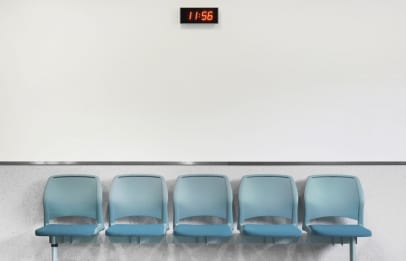There is limited information out there about how cancer affects LGBT people differently than the rest of the population.
And while there tends to be lots of attention paid to preventing or treating sexually-transmitted infections in the community, many healthcare providers believe that cancer should be a greater concern for queer people when making healthcare decisions.
Daily Xtra spoke with Dr Ed Kucharski, a family doctor at the Sherbourne Health Centre who also does work for Cancer Care Ontario, about some of the reasons why cancer may be more of a problem than many LGBT people may think.
1. Screening rates are much lower

While there haven’t been many studies looking into the issue, one reason that some doctors believe the LGBT community has higher cancer rates is because queer people tend to get fewer cancer screenings than the rest of the population.
“When we screen for cancer we can catch it when it’s asymptomatic,” Kucharski says. “If they’re screening at lower rates, it’s perceivable that they might have a delayed diagnosis.”
For a lot of people, especially gay men, cancer may not be a top-of-mind issue.
Kucharski says that the focus on HIV-prevention among gay men sometimes leads them to not think about getting checked for cancer.
2. Homophobia and transphobia

But another reason screening rates might be lower is because many LGBT people encounter homophobia and transphobia in the healthcare system and avoid doctors as a result.
“I’ve heard some of our patients are laughed at or discriminated against at other clinics or health care facilities,” Kucharski says.
This is a problem for trans patients in particular, who also have to deal with the fact that many cancer screening tests can be particularly uncomfortable for them.
“For a lot of trans folks, gender dysphoria can be quite strong and a lot of the screening tests that we do, whether it be pap smears or a mammogram can be quite gendered,” Kucharski says.
3. Anal cancer rates are higher in gay men

Anal cancer is one of the few cancers that has been consistently found to be higher among gay men.
While the incidence of anal cancer in the general population is about two per 100,000, it’s considerably higher among gay men — around 35 per 100,000.
The incidence is even higher for men who are HIV-positive.
“The silver lining that I think that we have at least with anal cancers is we have vaccines that prevent HPV infection,” Kucharski says.
However, not a lot of providers are offering the HPV vaccine to their gay male patients.
“I think the risk of taking the vaccine is low and the potential benefit could be huge if you don’t get cancer,” he says.
4. Smoking and drinking

LGBT people, both in Canada and the United States, tend to smoke more than the rest of the public.
The Toronto Rainbow Tobacco survey, a 2012 study that looked at the Toronto LGBT community’s smoking habits, found that 36 percent of people surveyed were currently smoking and another 25 percent were former smokers.
Obviously, this can lead to increased risks of lung cancer and a number of other cancers.
But queer people also tend to drink more — and drink more often.
Kucharski says that alcohol consumption puts people at higher risk for gastrointestinal cancers as well as breast cancer.
5. HIV

For people who are HIV-positive and not being treated, the virus can put them at risk for certain types of blood-related cancers, like lymphoma. It can also lead to Kaposi’s sarcoma, an otherwise very rare form of skin cancer that typically shows up in people who have AIDS.
Even if HIV-positive people are being treated with antiretrovirals, Kucharski says more frequent cancer screenings are a good idea, especially when it comes to cervical cancer.
“Anybody who has a cervix and has HIV, we recommend cancer screening on an annual basis instead of every three years,” he says.

 Why you can trust Xtra
Why you can trust Xtra


